Coalescent- Design and Artefact
A new body of work exploring lineages of glassmaking through contemporary design.
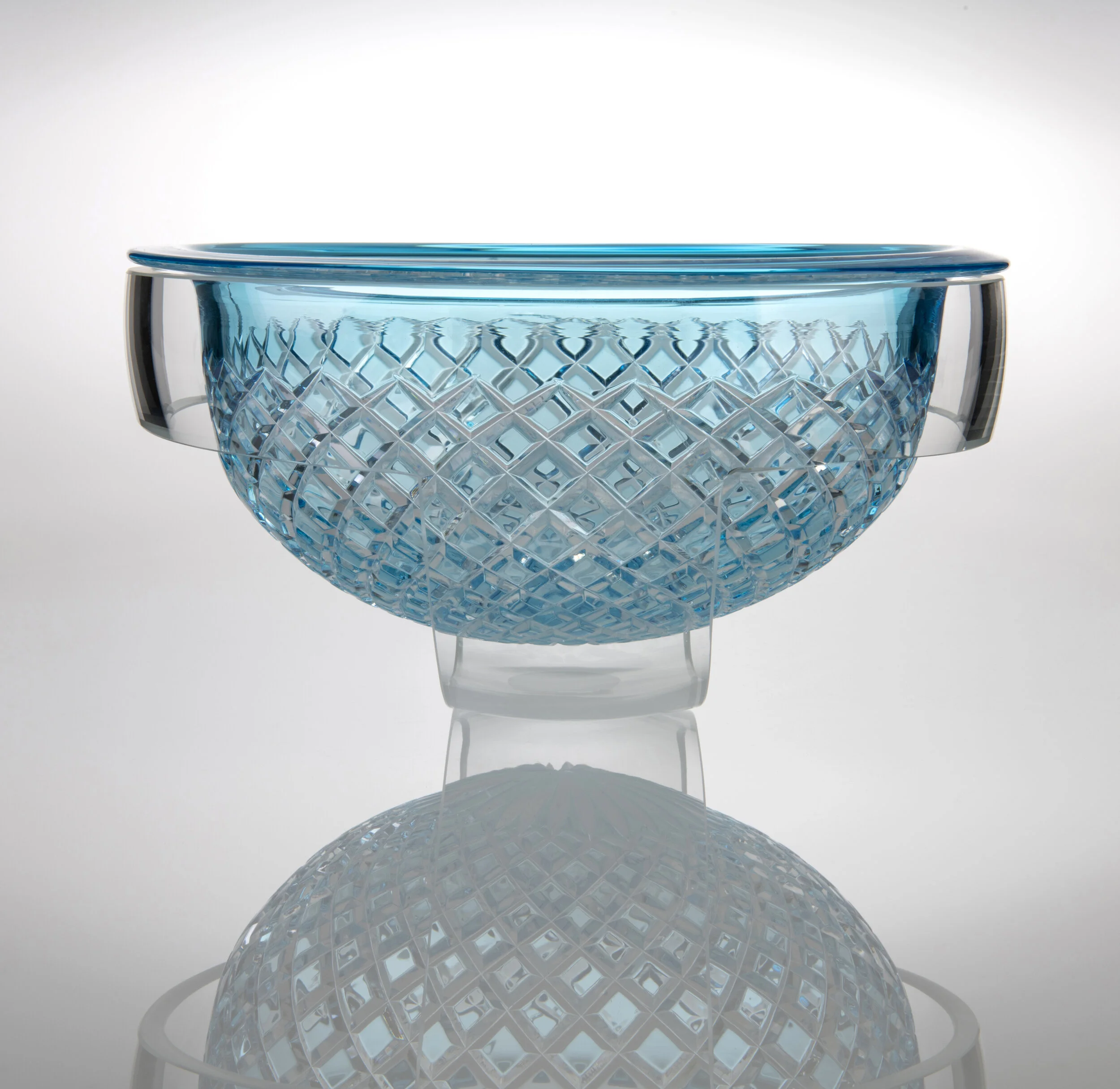
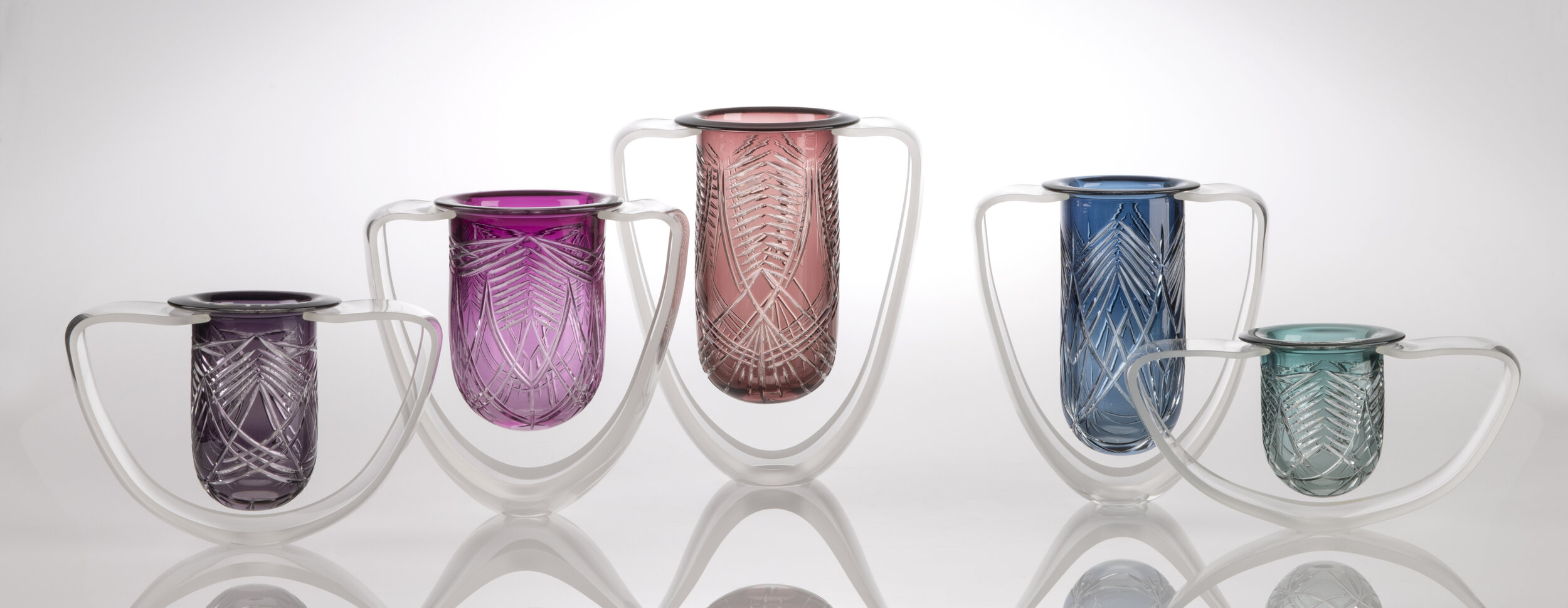

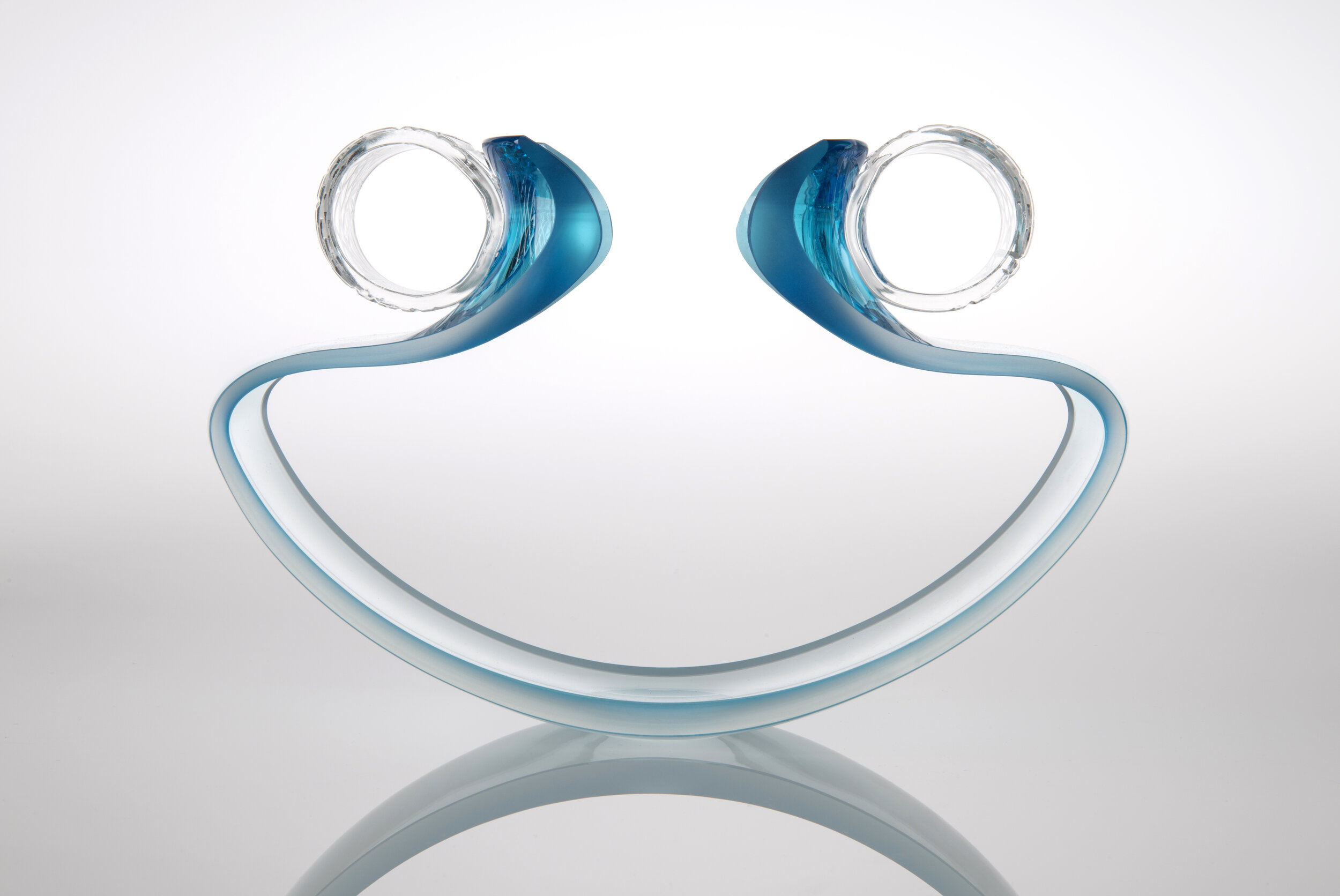
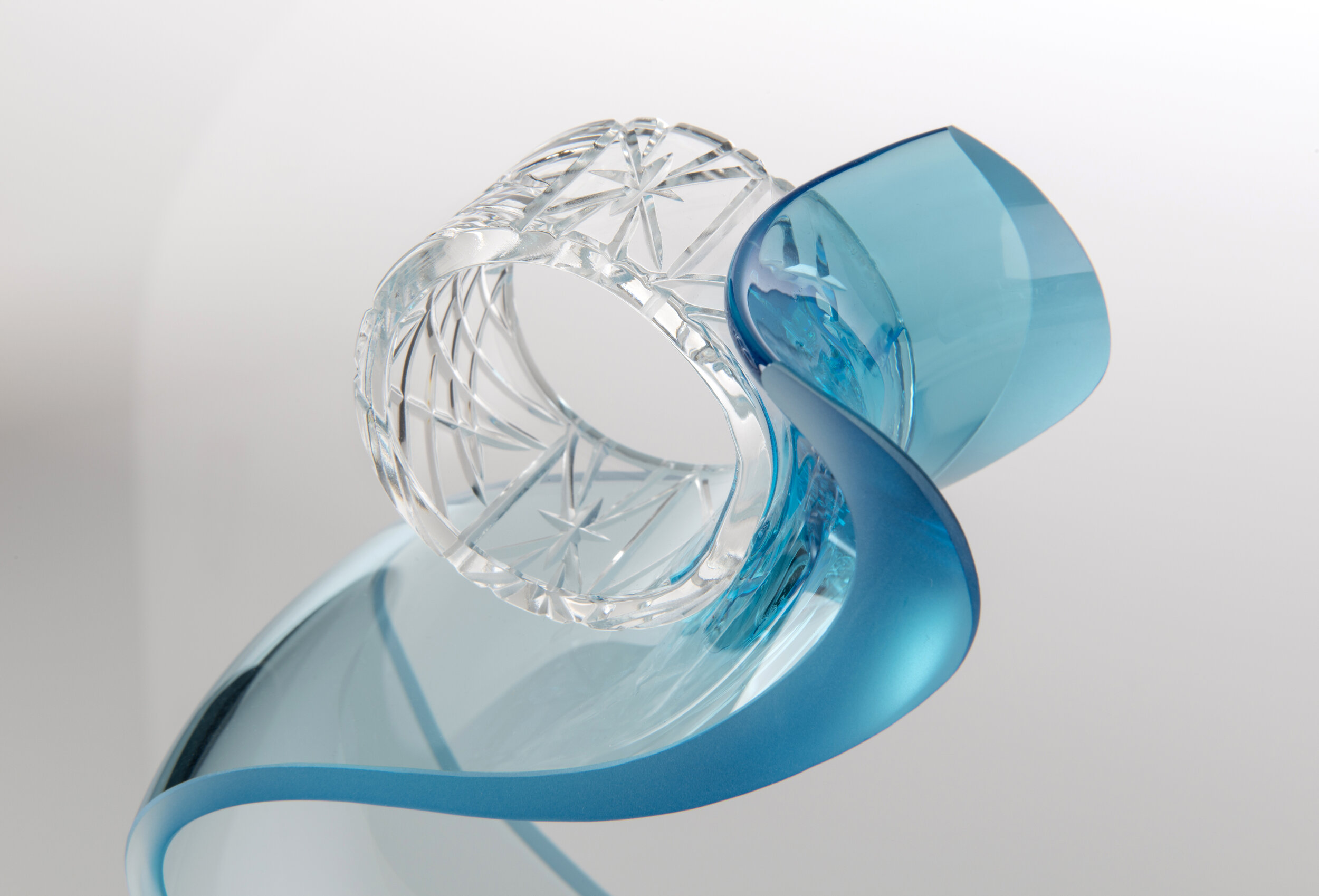
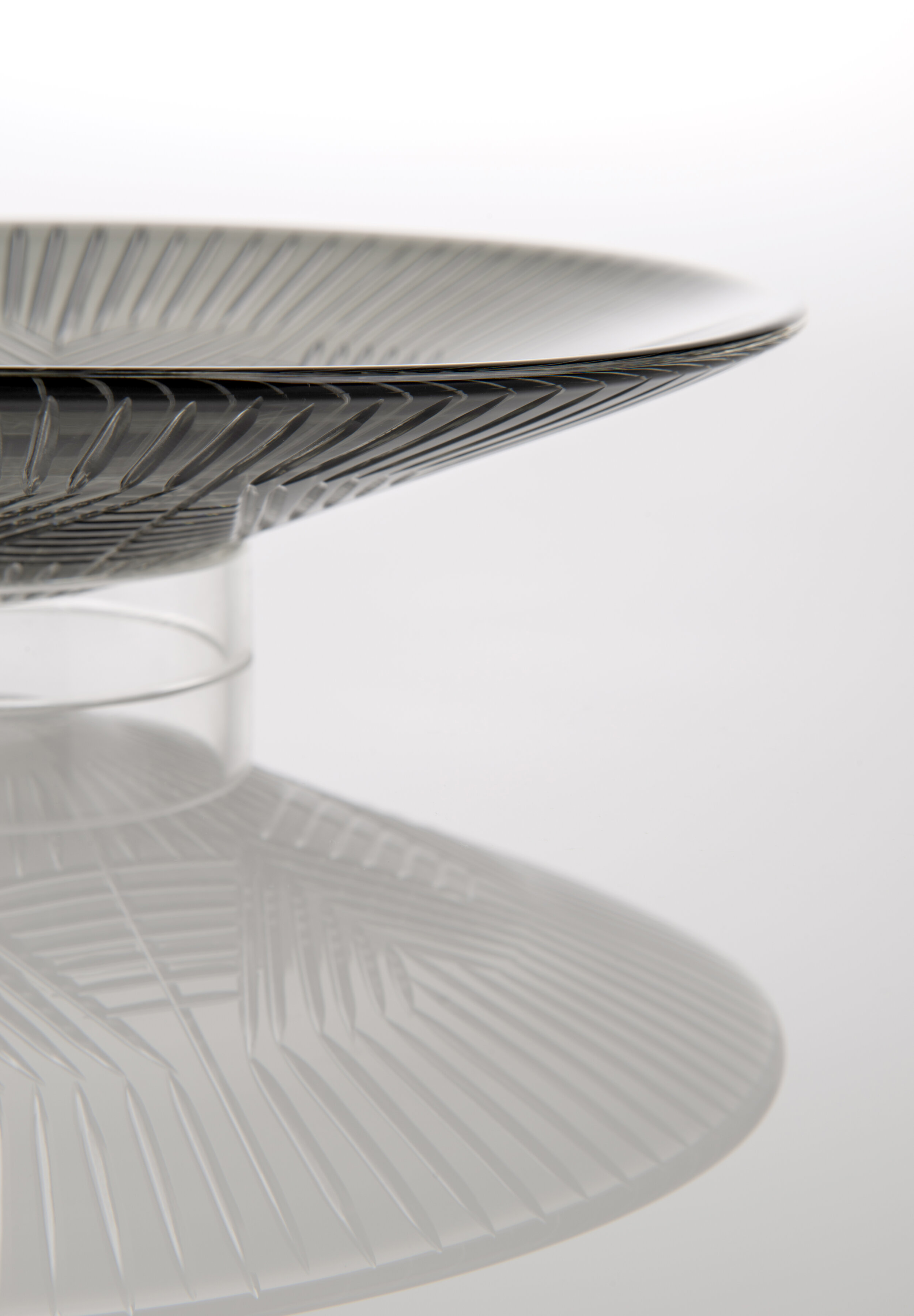
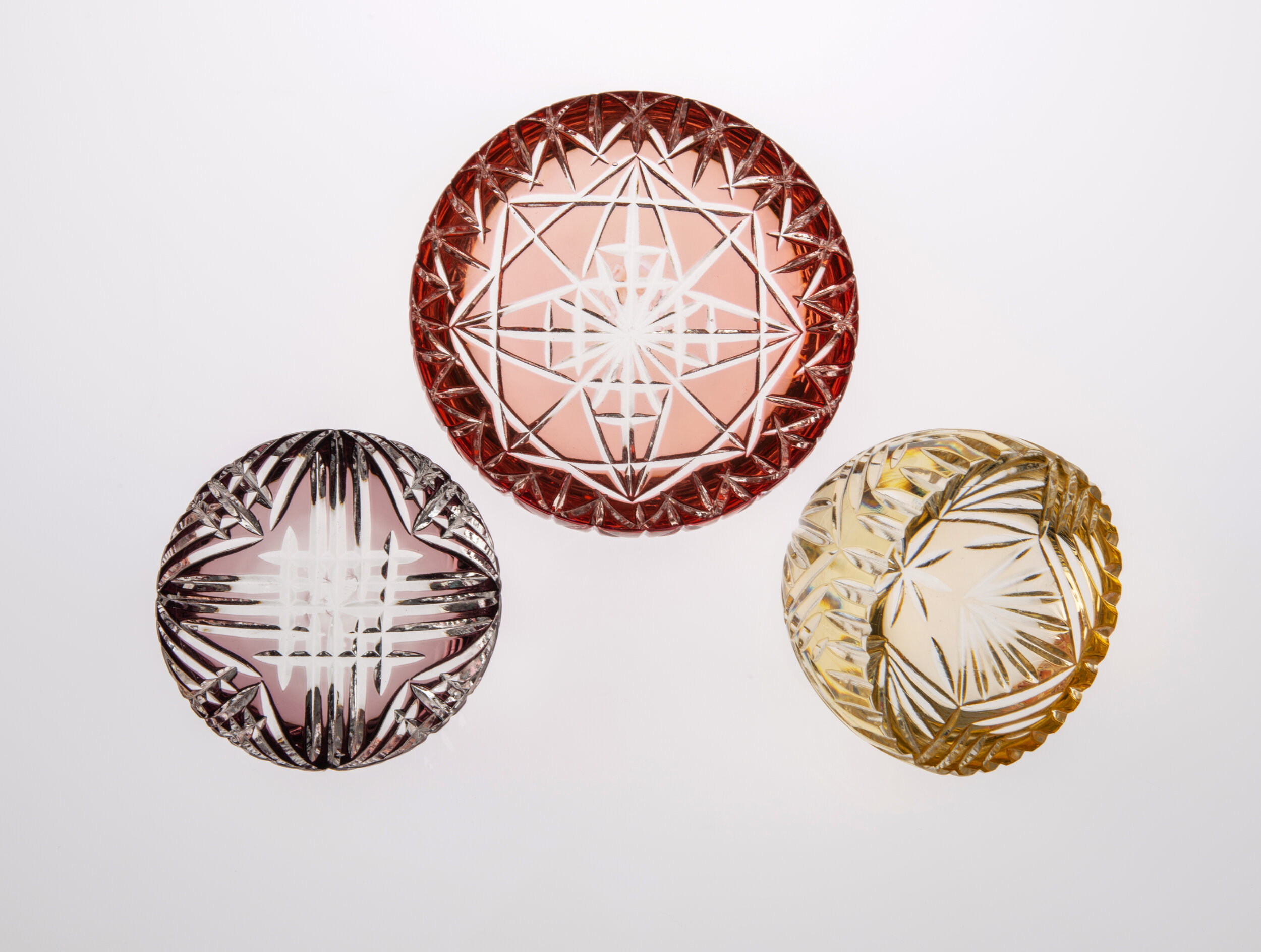
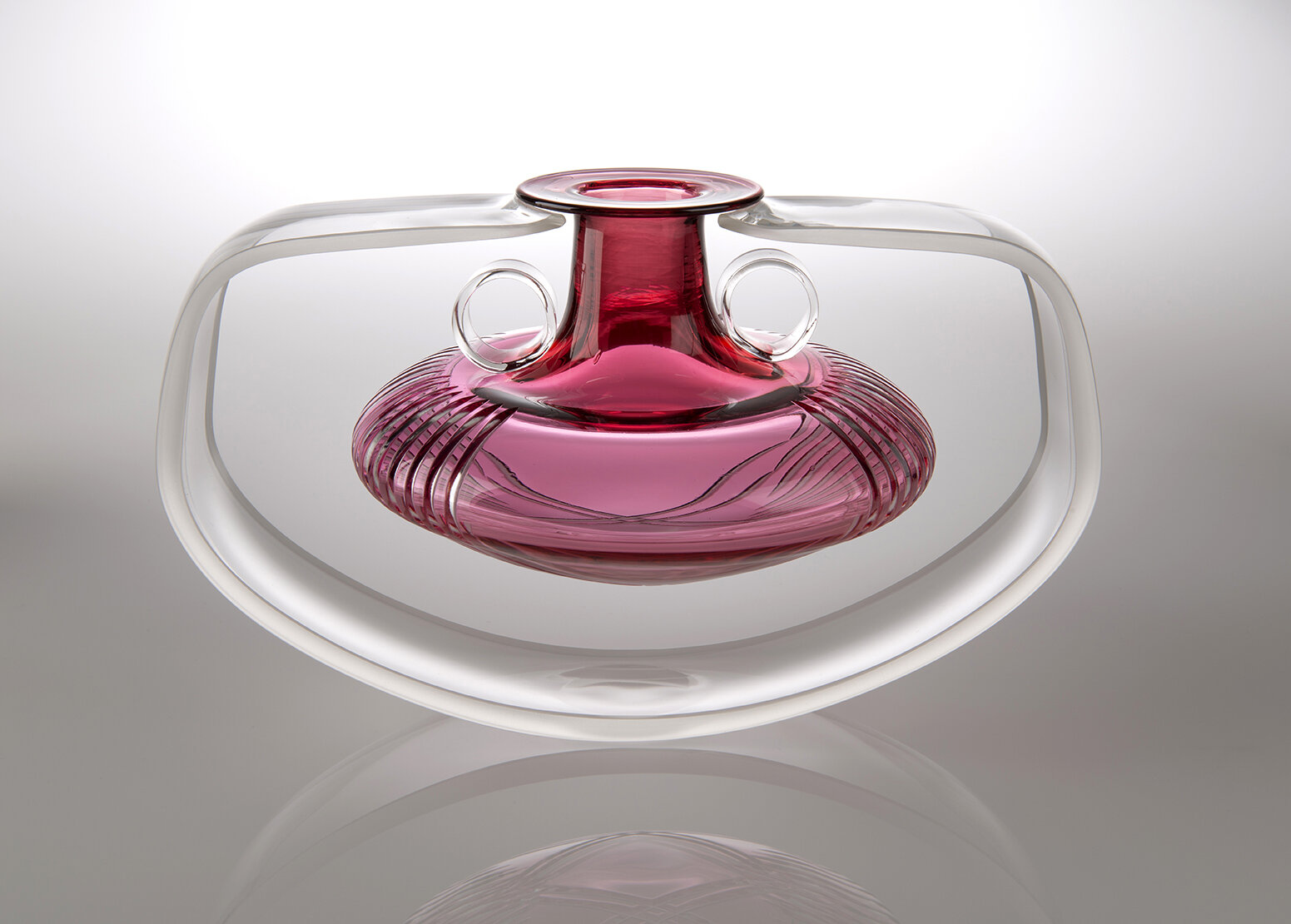
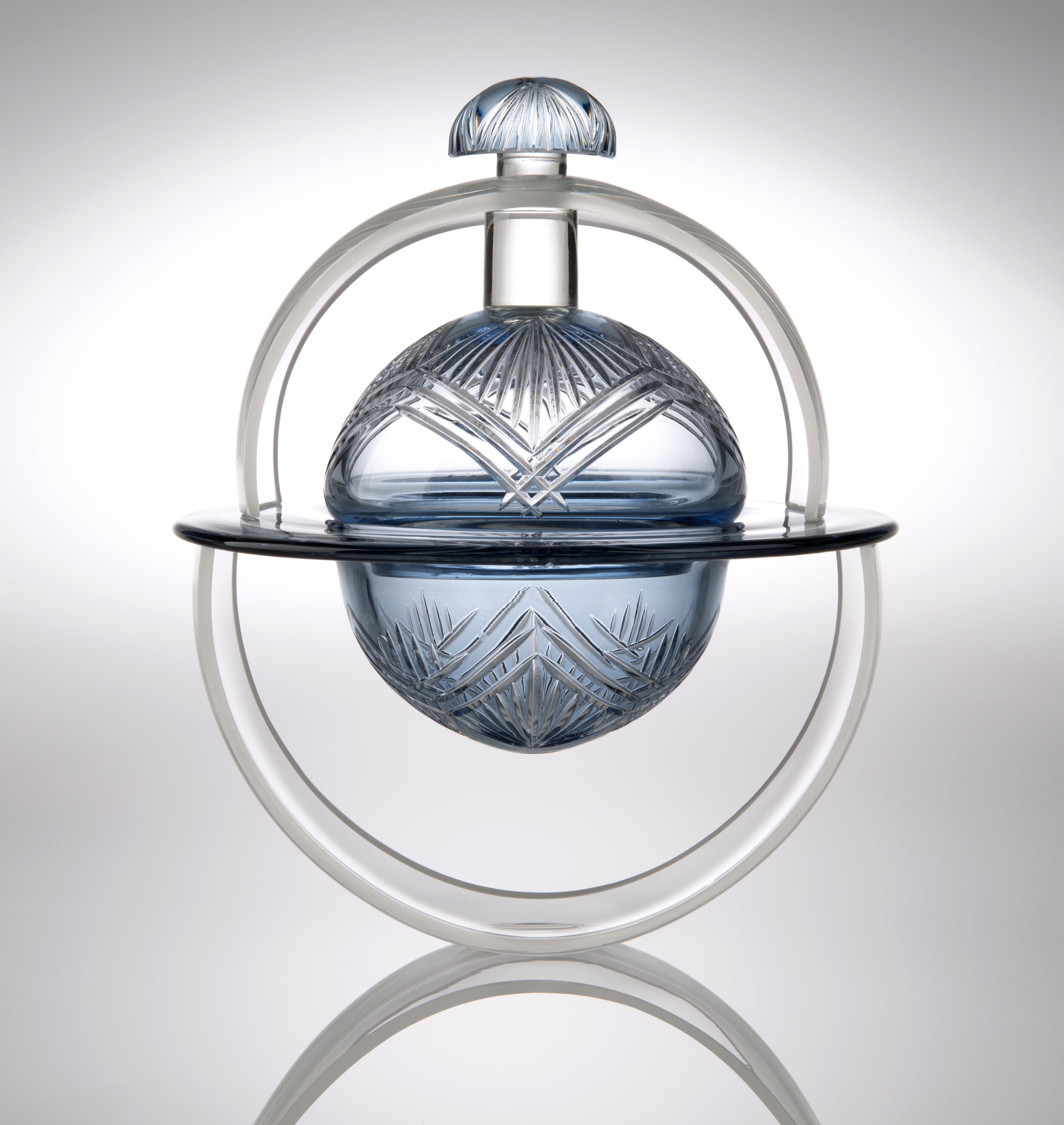

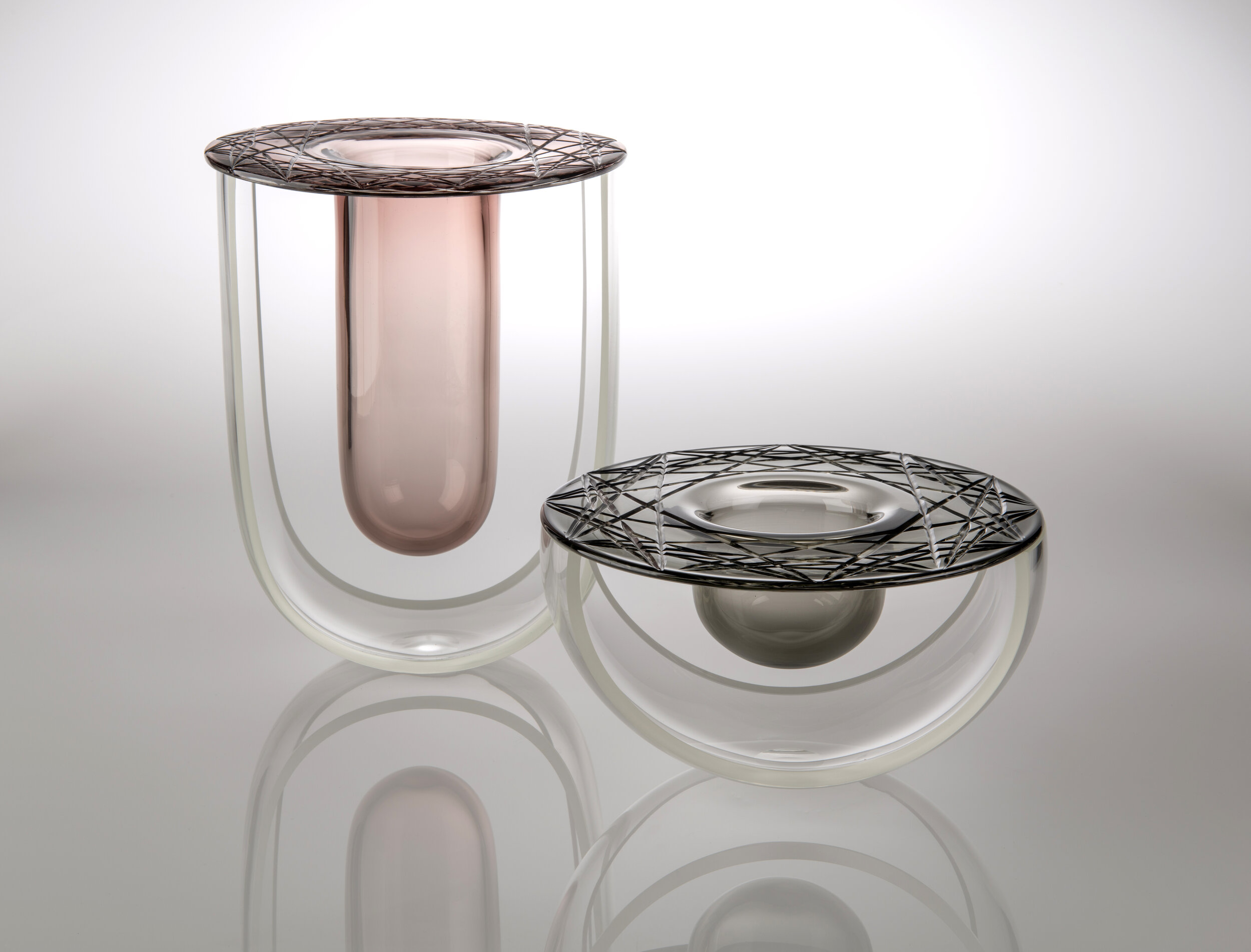
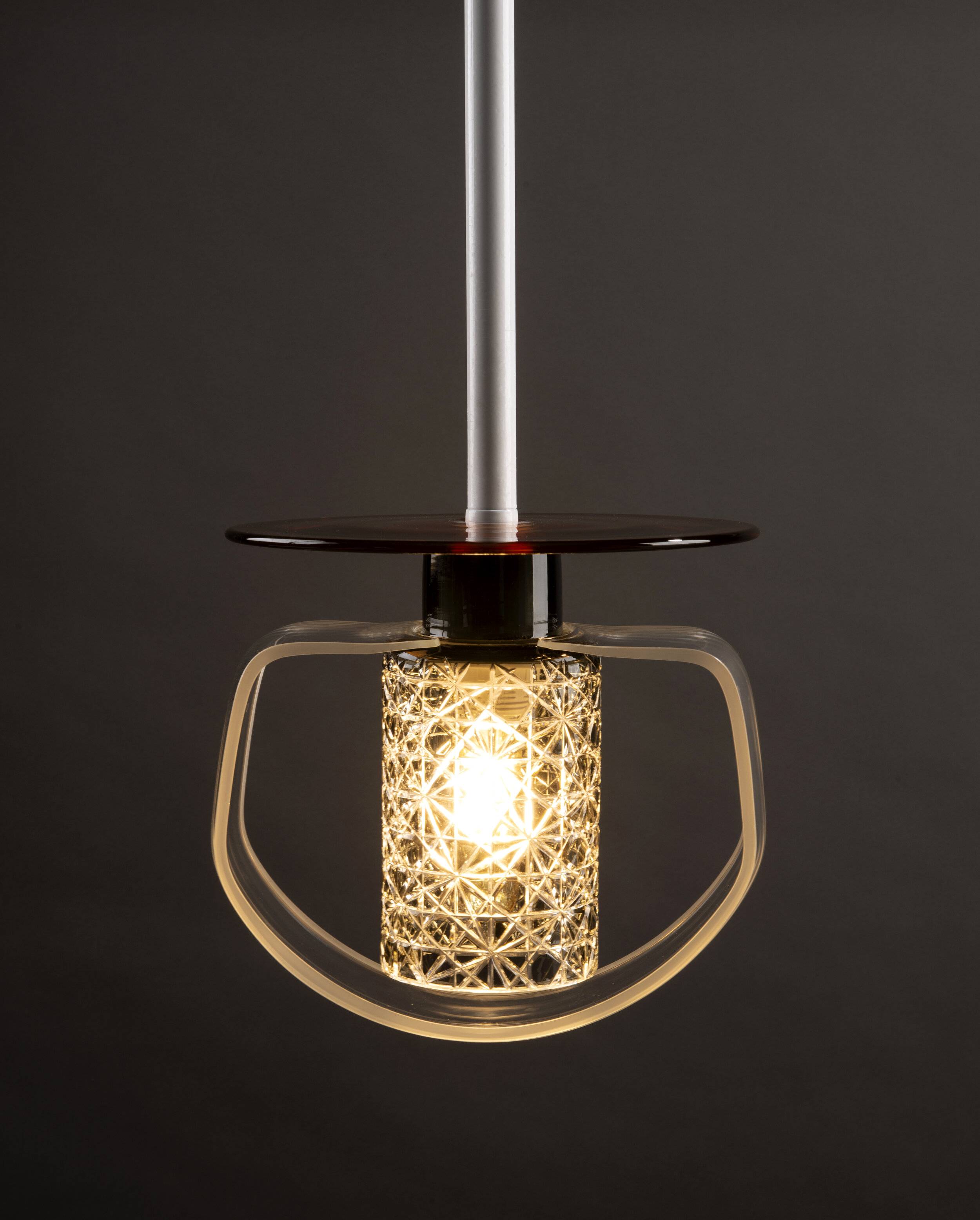
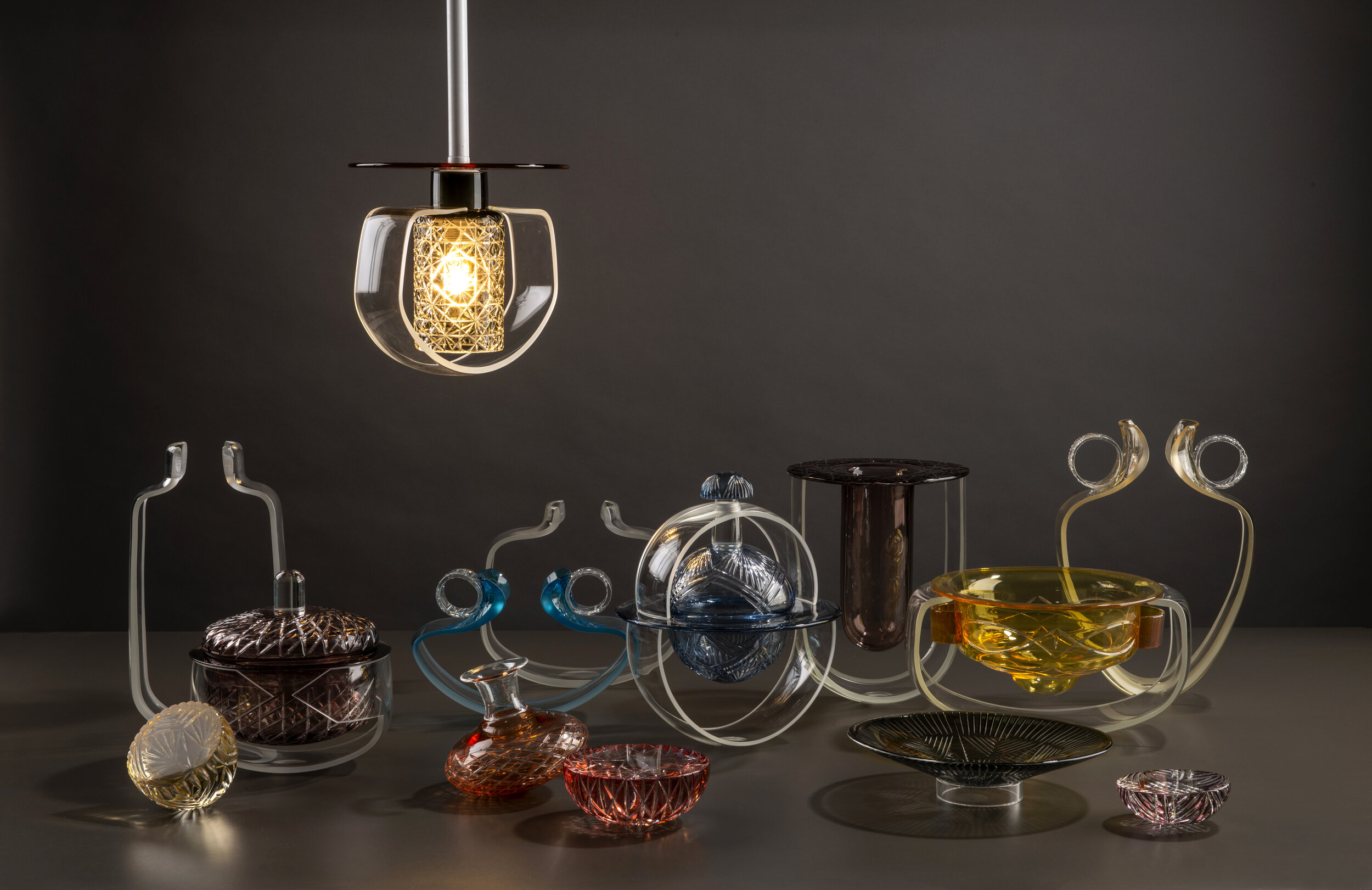
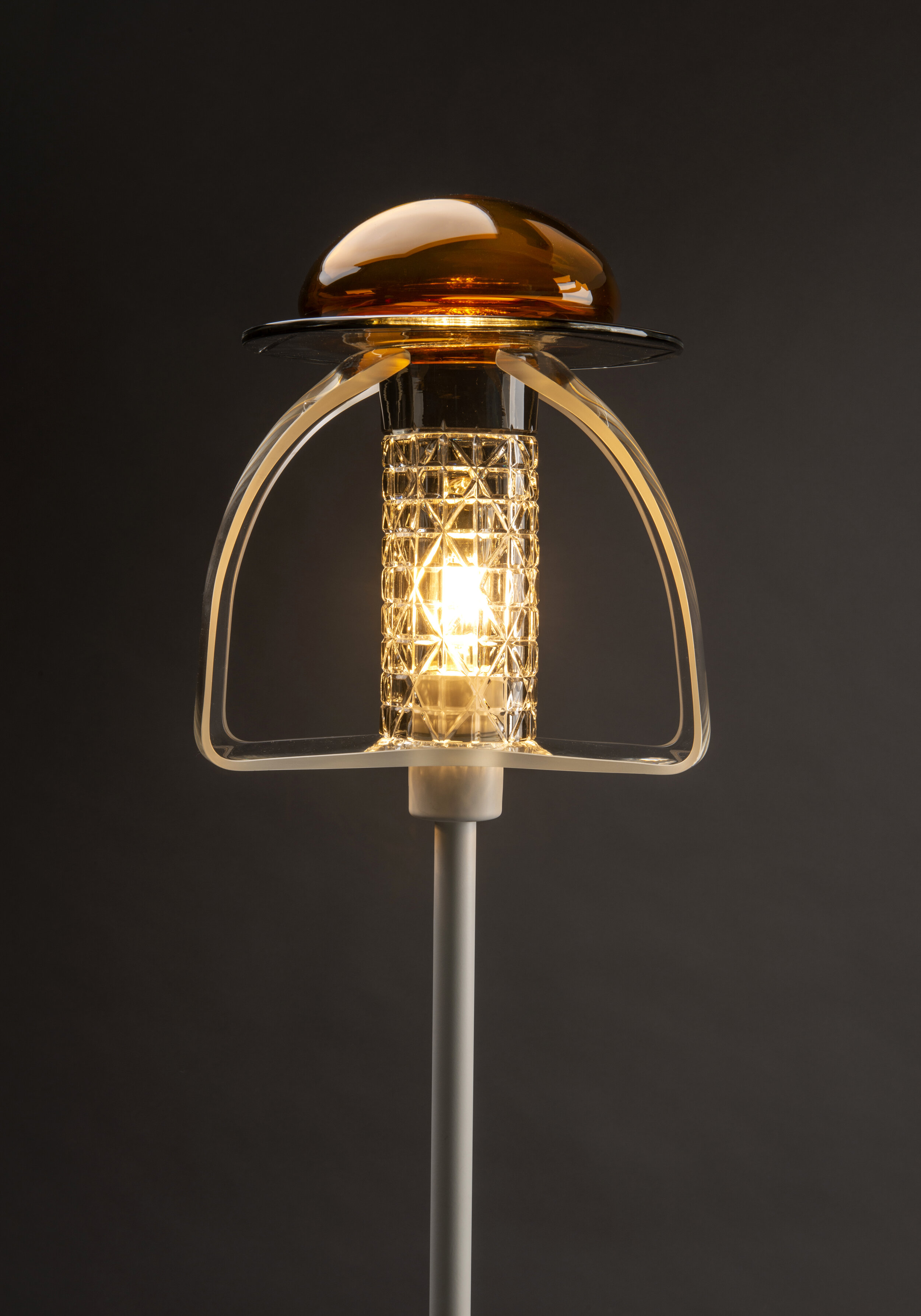

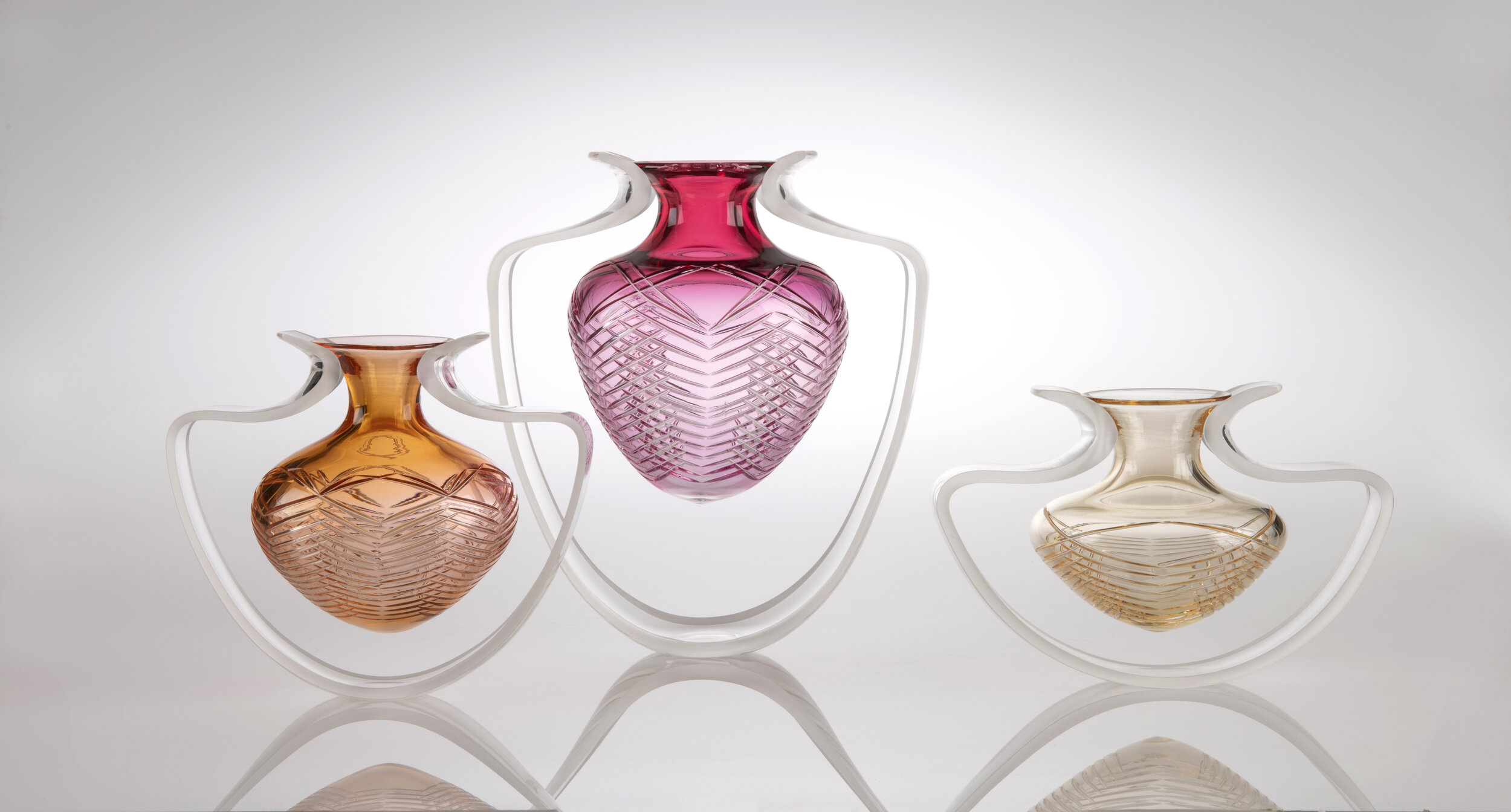
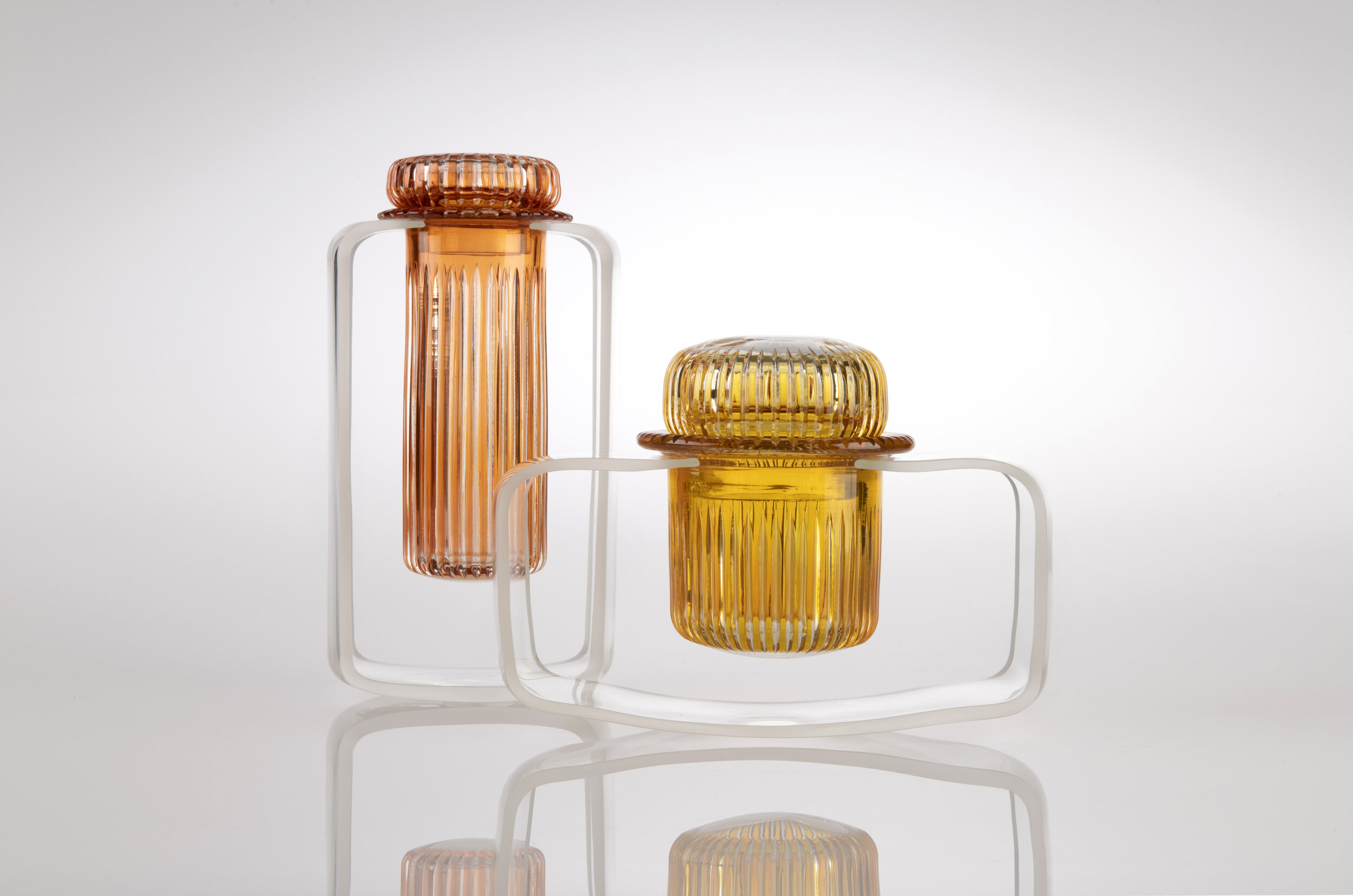
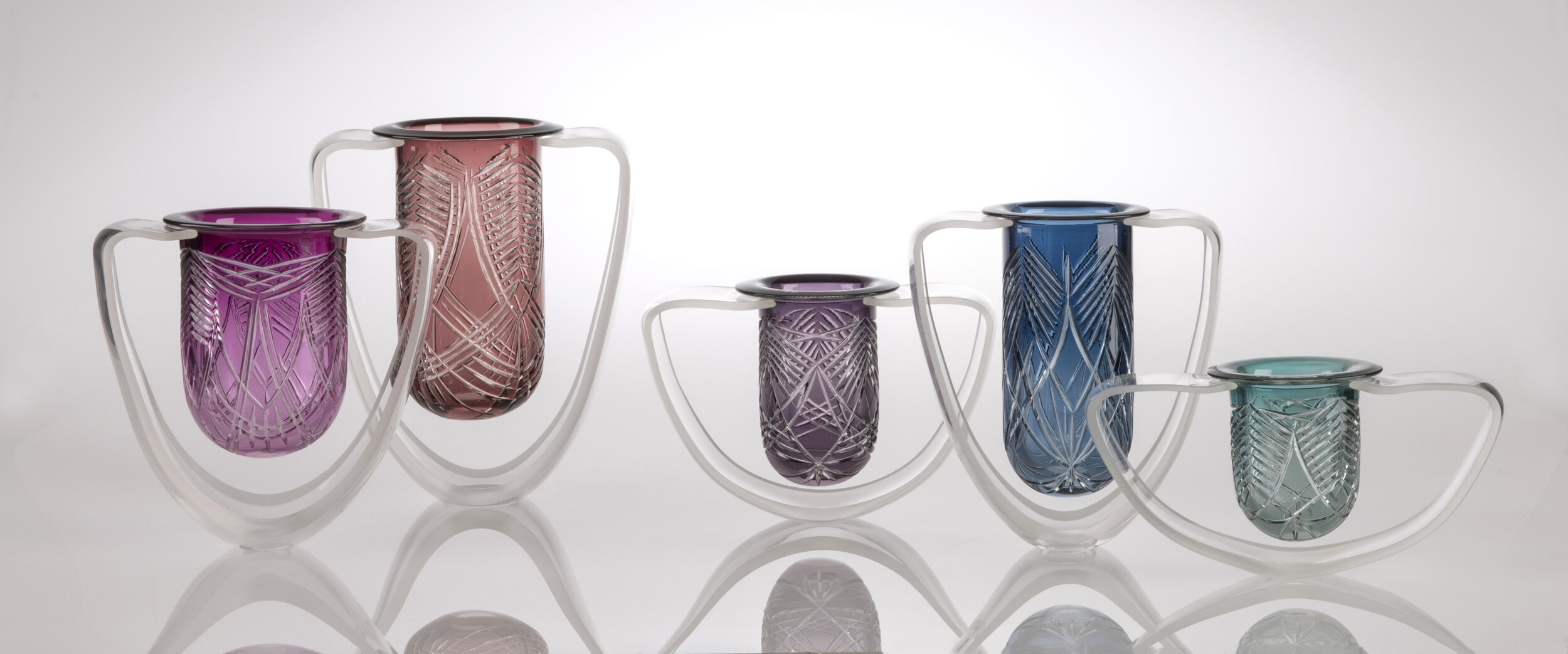

EXHIBITION ESSAY
Kristel Britcher: Coalescent: Design and Artefact
Enamoured by the seemingly endless possibilities of glass design, South Australian artist Kristel Britcher uses her solo exhibition Coalescent: Design and Artefact, to explore historical glass aesthetics and processes while engaging in a dialogue between past style and contemporary design. In this design-focused exhibition, Britcher brings together her interest in history, legacy and co-dependence in object design and connects her practice to important moments, aesthetic trends and technical developments within the history of glass making.
Through her research into historical glass objects and museum collections, Britcher has considered styles and techniques from various eras in glass production, melded them with her own design interests and utilised them within her practice. While referencing style elements drawn from antiquity, modernity and the contemporary, the purpose of Britcher’s artworks is not to recreate previous styles, but instead to develop new artworks that connect current process to the past and explore the various lineages of glass making.
Training in traditional Czech glass cutting techniques was a pivotal moment in Britcher’s career as a glass artist and has been a hugely influential cornerstone to the development of her latest body of work. “Cut glass has a history of reverence, decadence and opulence – it’s rarely used and always on display,” Britcher says, “Cut glass uses the optic and refractive qualities to bring light and movement within a glass object and create something special for the beholder.”
Over the course of her career, Britcher has consistently worked towards developing her traditional glass cutting skills in order to create new works that offer a more contemporary application for these processes. In 2013, Britcher undertook a month long masterclass at the Střední uměleckoprůmyslová škola sklářská (Czech Glass School) with master engraver Kment Rudolf and master cutter Josef Kris. The school is based in the small town of Kamenický Šenov, which has a long history of glass production and is known for the high quality of engraved glass produced in the area. During this masterclass, Britcher became proficient in the cuts used in traditional local designs and learnt the techniques of cameo engraving, brilliant cutting, polishing with pumice, and dressing and cutting with stone wheels. In 2016, with assistance from Arts South Australia, Britcher attended a residency at the Martin Stefanek Studio where she continued her training in traditional Czech stone wheel cutting techniques from master coldworker Jiří Štencl.
When creating the cut glass vessels and frame forms, Britcher begins by sketching her ideas, researching historical points of reference and occasionally making prototypes to ascertain that the coldworking processes are possible. For Britcher, “Coldworking is an opportunity to take a piece of glass to the next level….To finish it, to repair it, to add texture, to sculpt and to enhance the qualities of glass and make that piece much more refined.” Test cuts on prototypes also allow Britcher to measure the spacing and map out the design on the form, ensuring that the diamond wheels can move in the way required to create the pattern.
While some pieces are created with a more freehand approach, with Britcher starting with a central design and lets the shape or the wheel guide the remaining pattern, most designs are carefully conceived beforehand. Almost all of the patterns in Coalescent feature patterns that are adaptions and have loose references to traditional designs. It is important to note that Britcher does not follow the specific techniques that were used to create the historical objects she references. “I’m not a master cutter and it’s not my motivation to master any of these techniques, but instead to draw on design elements to complement the forms and compositions I’m creating,” Britcher says.
Traditionally, the glass was cut with a stone wheel and the glass itself had a much higher lead content, making it softer to cut and to be polished with acid. In the creation of these artworks, Britcher has used a harder soda lime glass that requires diamond wheels and firepolishing. After the glass forms are blown, annealed and cooled, Britcher sketches the finalised cutting designs onto paper and then onto the glass surfaces before carving the patterns with diamond ‘v’ shaped wheels. The forms are then re-heated in the hot-shop where the cut surfaces are polished to the desired finish.
Coalescent features a series of blown and cut glass vessels that are carefully suspended within cut glass forms, with Britcher using compressive strength and gravity to create balance and tension between the objects. Strongly material and process driven, the artworks illustrate the eclectic influences on Britcher’s practice by referencing the form of Ancient Roman amphorae, the geometric line details of Art Deco design, the curved fluid lines and decorative details of the Baroque, and geometric forms of Post Modernism. The adapted cut glass patterns also loosely reference the strict geometric qualities of Russian and Czech glass cutting, as well as the broad and open compositions of Western European cutting. Britcher has drawn reference from a range of techniques from various geological and historical periods within the global history and development of studio glass in order to bring a sense of familiar and past to the new works she has created. “‘Coalescent’ means to meld or come together to form a whole,” Britcher says. “This is what these works are designed around – touching on various styles and processes and bringing them together to create a new design object.”
The artworks displayed in Coalescent are simultaneously reminiscent of the reverence-inducing objects displayed in museum collections and the innovative world of contemporary design, comfortably straddling the historic and the contemporary as a dynamic hybrid. While the glass objects balance upon one another precariously and create a little unease, Britcher’s carefully considered artworks showcase the strength, versatility and timeless possibility of glass and how the past continues to influence the future of contemporary studio glass.
Deco Suite, 2020
